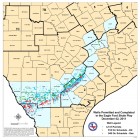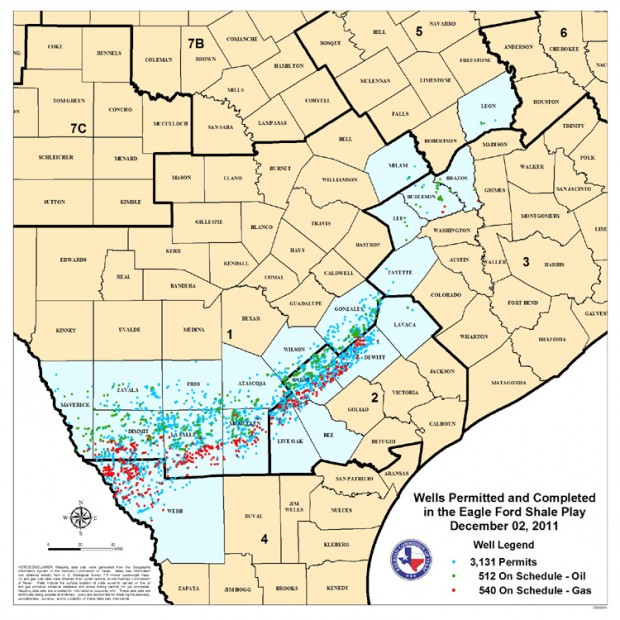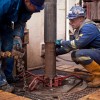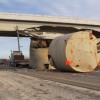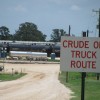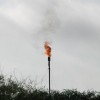Background
What is the Eagle Ford Shale?
The Eagle Ford Shale is a South Texas geological formation with a large amount of oil and natural gas. It’s about 50 miles wide, 400 miles long, on average 250 feet thick and buried between 4,000 and 12,000 feet below the surface of the Earth, reaching from the Mexican border into East Texas according to the Railroad Commission of Texas. It was created when a giant forest was buried near the beginning of the dinosaur era, about 100 million years ago.
The majority of the rock is notably brittle, making it a prime target for oil and gas extraction through hydraulic fracturing, or “fracking,” a process in which rock is smashed with a high-pressure mixture of water, sand and chemicals to release small pockets of oil and gas inside.
Fracking has become significantly more effective since the innovation of horizontal drilling. Now that wells can be moved horizontally through shale beds, hydraulic fracturing is one of the primary ways manufacturers retrieve natural gas today, used in nine out of ten of the country’s natural gas wells. The Eagle Ford Shale yields both wet and dry gas.
The shale is attracting both domestic and foreign companies that are becoming one of the largest employers in the state, according to the paper. A UTSA study suggests there will be 5,000 new wells by 2020, which may add 68,000 full-time jobs in Texas. The economic output could be as big as $21.5 billion, according to the study.
Notable Statistics and History
The first well was drilled in the Eagle Ford Share in 2008. The number of producing oil leases in the Eagle Ford Shale increased by about 6,300 percent from 2009 to 2013. The number of producing natural gas leases increased by about 3,600 percent from 2009 to 2013.
The Eagle Ford Shale is named after the town of Eagle Ford located about six miles west of Dallas. The oil and gas producing site was first discovered by Petrohawk— an independent oil and natural gas company— in 2008.
Between January and March 2014, 804,299 barrels of oil and 3,496 cubic feet of natural gas were produced per day.
What is Shale Exactly?
Shale is very fine-grained, highly compressed sediment mixed with ancient composted plant and animal remains. It is formed when large forested soil beds are buried and pushed underground for hundreds of millions of years without being pushed so deep that they melt. When shale is pushed near to Earth’s heated interior it melts and becomes slate.
Shale is often rich in fossil fuels. Under intense pressure for long periods of time, decomposed matter from ancient plants and animals will morph into fossil fuels – oil, coal and natural gas. The energy in fossil fuels comes from carbon manufactured by plants using energy from sunlight.
Here’s a map of the Eagle Ford Shale:
